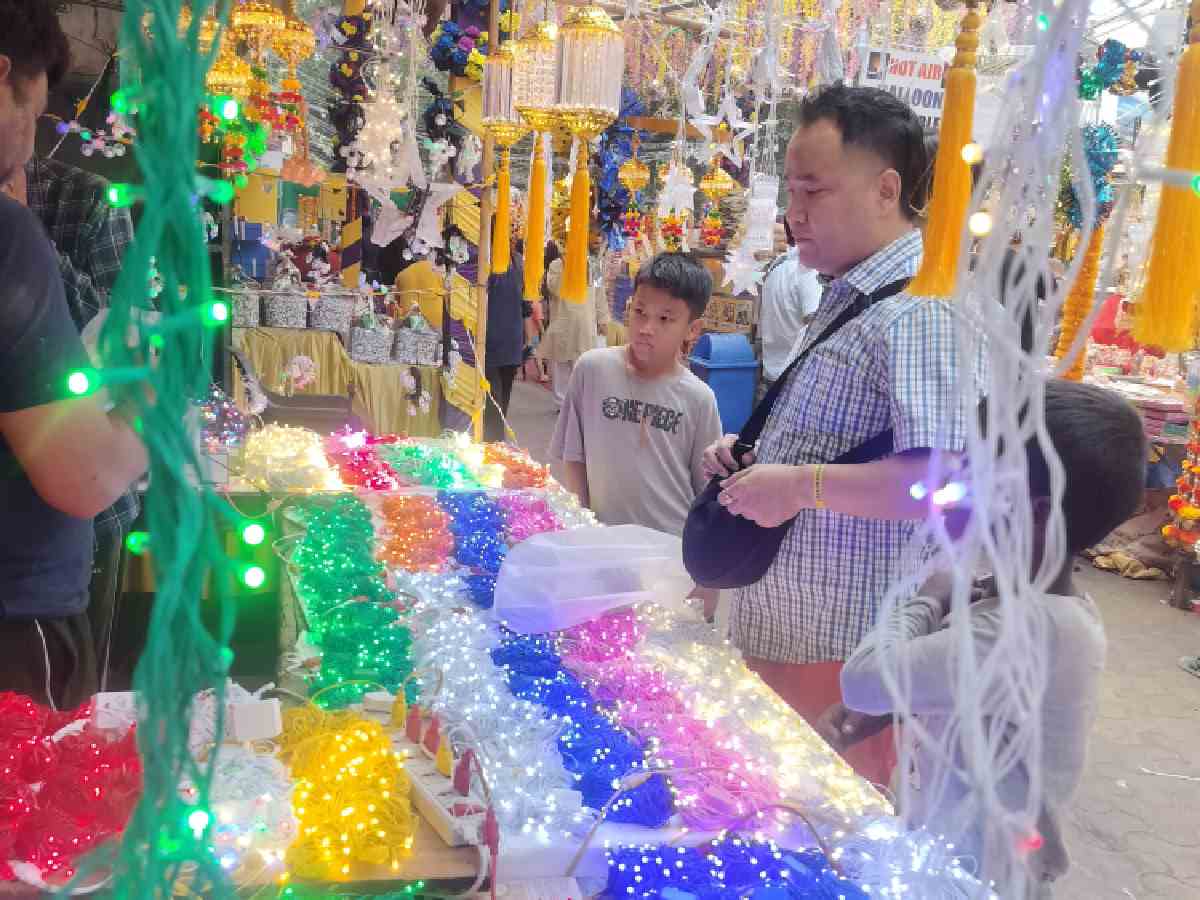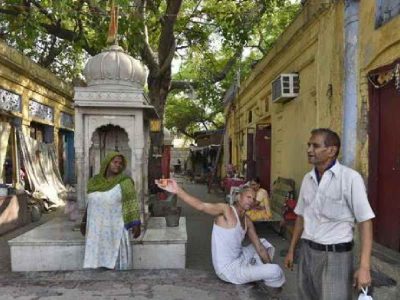Hafta Bazaars: On a misty October evening, Sangam Vihar’s Saturday Market in South Delhi pulses with vibrant energy. Shoppers navigate through a maze of stalls adorned with sparkling bangles, intricately embroidered garments, and radiant sarees, while the irresistible aroma of spicy snacks entices passers-by.
Amidst the lively chatter, a vendor passionately shouts, “Come see for yourself! Unbeatable wedding season prices, the finest quality in the market!” This lively scene embodies the heart of Delhi’s bustling hafta bazaars, where rich traditions and a strong sense of community come alive.
Festive markets
For vendors like Kamla Devi, a 48-year-old saree seller who has secured her spot in the Saturday Market (Shani Bazar) for two decades, this season brings long hours and competition. “I start preparing months in advance,” she says, arranging stacks of embroidered sarees. “If I don’t make enough now, it’s hard to get by during lean months.”
Her daughter Shobha, 26, helps with sales, noting their income can nearly triple during the festive season. “People love finding everything in one place,” she says. “They ask us what’s trending, and we know our regulars well.”
“Festival season is everything for us,” says Sandeep Halduniya, an antique jewellery vendor in Karol Bagh. “We look forward to these months all year,” he says.
Also read: From royal feasts to street food: tracing Delhi’s culinary journey
Halduniya’s stall displays statement necklaces, traditional jhumkas, and delicate anklets—all favourites among wedding guests and brides completing trousseaus on a budget. Sales during these months are more than double an average month.
Shoppers like Preeti Jain, a young bride-to-be, are a driving force behind this surge. “I have been visiting Karol Bagh’s Monday Market for eight years and wanted to buy dress material for my functions,” she says, sifting through vibrant fabrics.
“My family prefers physical shopping over online. Sure, online is cheaper, but we can’t examine items first-hand. Bargaining is part of the experience, and we love returning,” says Preeti.
This personal shopping atmosphere—absent in malls and e-commerce—continues to draw buyers even as online shopping grows in popularity.
The enduring legacy
Each market, with its distinct schedule, serves as a bridge between historic villages and urban neighbourhoods. Beyond trade, these markets offer a glimpse into Delhi’s socio-economic landscape and the resilience of traditional commerce in the face of retail giants.
Sohail Hashmi, an oral historian and social activist, describes how the Friday market near Bhikaji Cama, historically connected to the village of Mohammedpur (now renamed Madhavpuram), continues to attract both local and middle-class buyers.
Similarly, Kishangarh near Chhatarpur hosts a Saturday market, while a Sunday market is set up beyond Masoodpur in Mahipalpur. Each day, a different village organises its own bazaar, with many of the same vendors rotating through a network of about seven villages. Another vendor cluster serves the neighbourhoods of Madangir and Kalkaji, forming a system that both maintains historical connections and supports local livelihoods.
These village markets date back centuries, potentially as far as 800 years, contrasting with newer flea markets like Urdu Bazaar.
Traditionally, they catered to rural communities’ essentials— whole spices, grains, lentils, and kitchen staples. Farmers and villagers would stock up on these supplies to last the week, focusing on items they didn’t produce themselves.
Hashmi notes, “These markets are changing, influenced by middle-class residents and urbanisation. Alongside traditional foods and spices, they now offer factory rejects, second-hand clothing, plastic items, and cosmetics—attracting new buyers from nearby urban areas.”
“Cars often line the markets, their occupants mingling with vendors, selecting fresh fruits and vegetables for the week,” he adds.
Weekly markets are not unique to Delhi. Other cities, like Pune, have similar gatherings named after the day they are held: Mangalwarpet for Tuesday, Budhwarpet for Wednesday, Shani Bazar for Saturday, and Itwar Bazar for Sunday.
Also read: The fading tradition of shakkar ke khilone in Old Delhi’s Diwali celebrations
Hashmi notes that these markets are vital for many, particularly the lower-middle class and young people aiming for affordability. He explains that the markets provide access to products that would be more expensive in malls. Factory rejects and imitation-brand shoes and cosmetics enable shoppers to buy fashionable items at a lower cost. At the Sunday market near the Red Fort, for example, numerous vendors sell shoes that mimic high-end brands. Although these shoes may not be as durable, they offer a stylish, budget-friendly choice for those who can’t afford branded products.
Moreover, these markets are a lifeline for the city’s unemployed. Many sellers source goods from wholesale markets, carrying their inventory on their shoulders to temporary stalls across the city.
Anshul Rajput, an independent economist specialising in retail markets, explains, “These markets foster a dynamic informal economy, where cash flow is reinvested locally, supporting small-scale producers and suppliers.”
“This grassroots economy is vital for maintaining employment and entrepreneurial opportunities, especially in urban areas with high overhead costs,” he adds.
Oversight Challenges
Arbind Singh, National Coordinator and founder of NASVI ((National Association of Street Vendors of India), describes the lack of regulation in these markets. While a Town Vending Committee, including police officers, is supposed to oversee weekly.
markets, Singh explains that, in practice, the New Delhi Municipal Council provides minimal oversight. Vendors largely manage on their own, with informal payments to police ensuring smooth operations. This has created an unspoken agreement where regulation typically only occurs through occasional interventions for additional income, he adds.
However, the lack of regulation leaves vendors vulnerable, creating a precarious cycle. Singh points out that despite the lack of official oversight, conflict among vendors is rare. “They have an unspoken code,” he says, adding: “They know where to set up, and everyone follows this routine, making self regulation smooth.”
These weekly markets thrive due to the personal connections vendors forge with customers—an intimacy missing in online shopping.
Manoj Kumar, a vendor in Vasant Vihar’s Wednesday Market, notes a recurring concern: cleanliness. “Especially at food stalls,” he says.
“People became more conscious about hygiene after the pandemic,” he said.
Singh adds, “We are working to collaborate with the Swachh Bharat Mission on waste management, hoping to involve vendors directly. These markets generate a lot of trash, especially with items like leafy vegetables.”
For now, the tradition of Delhi’s hafta bazaars remains intact, a vibrant testament to the city’s spirit and resilience amid constant change





